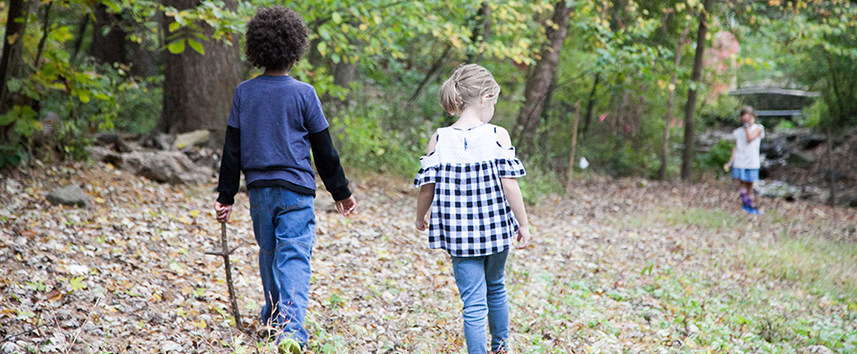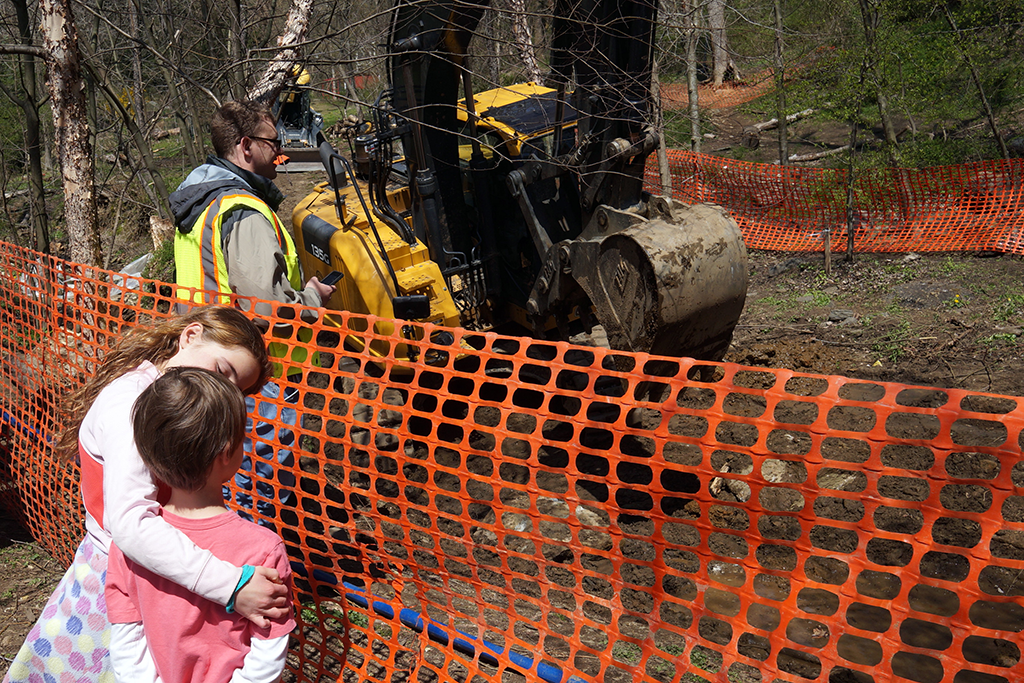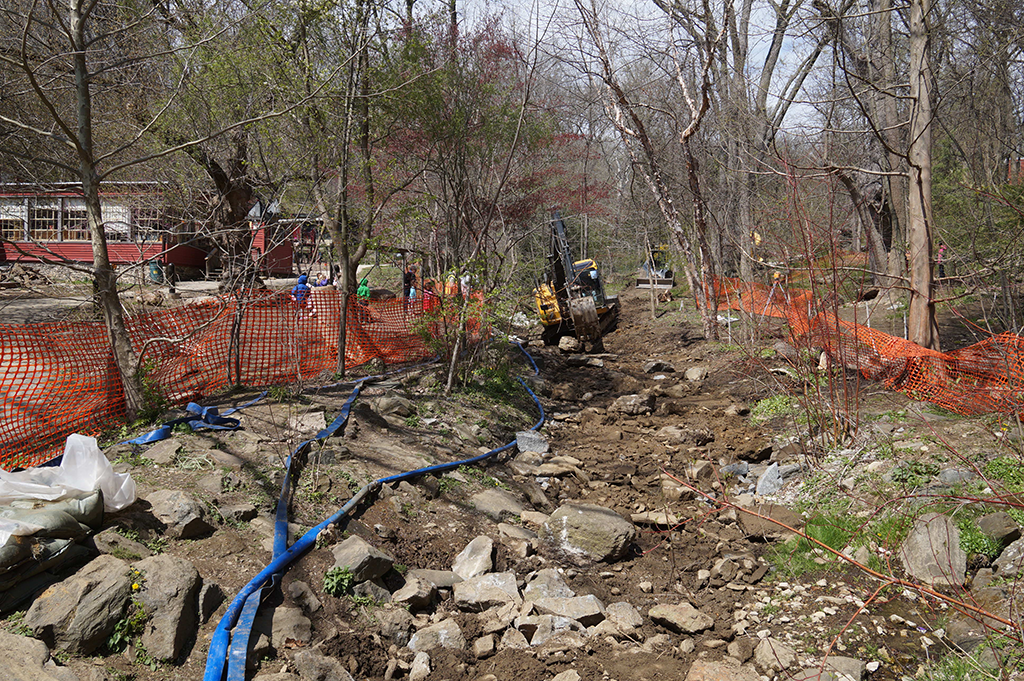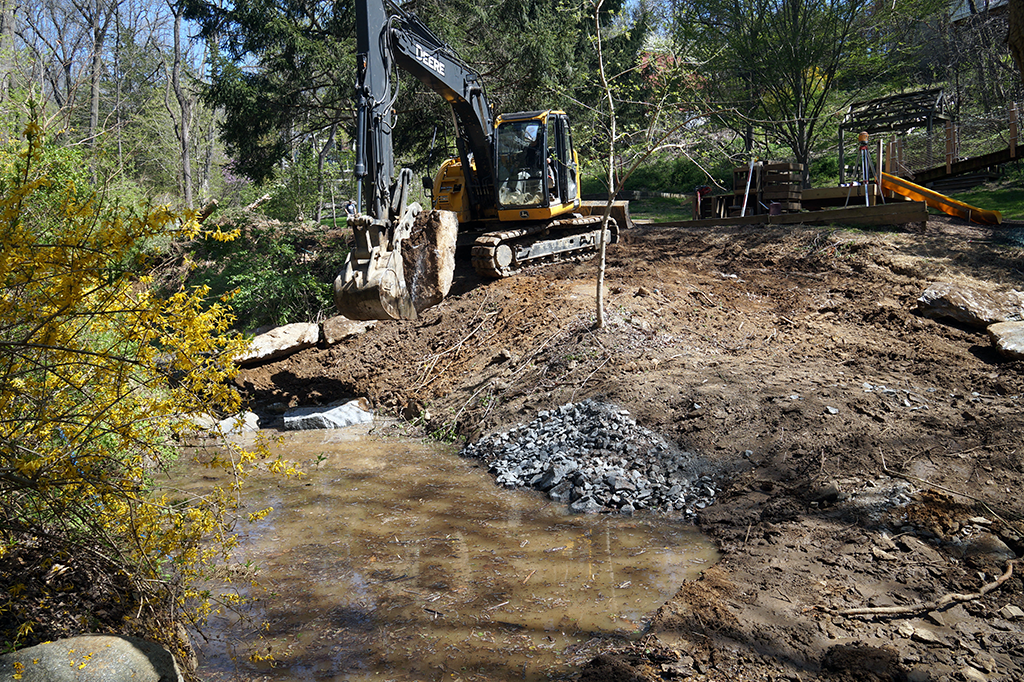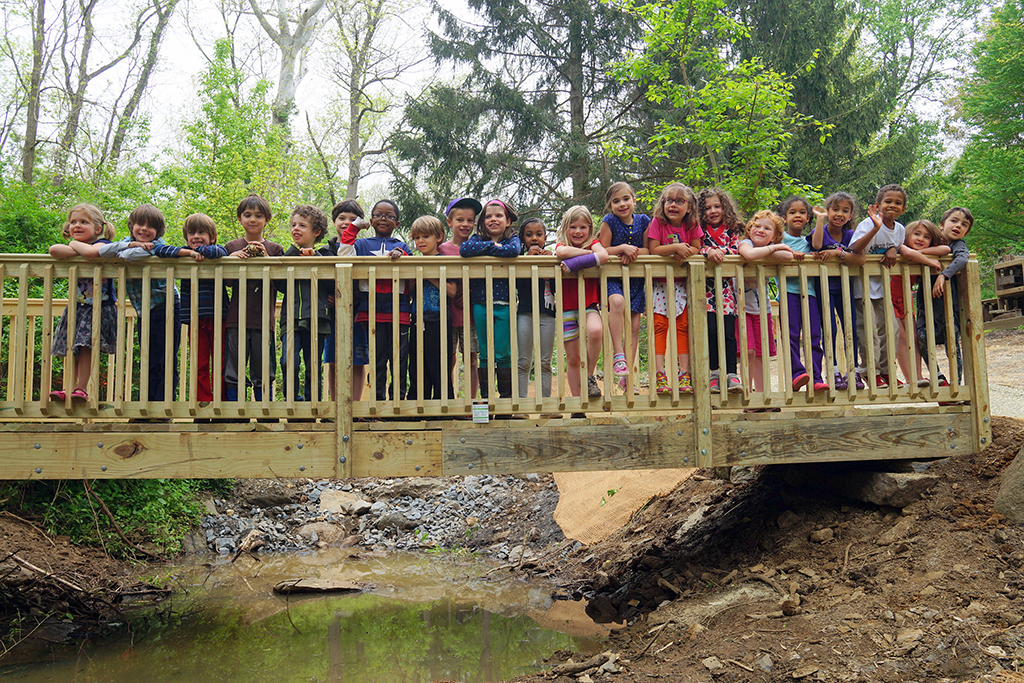Healthy Creek, Healthy Campus: An Update from the Miquon Creek
It has been a year and a half since the Miquon Creek Restoration Project was completed. It was the largest environmental project the school has ever undertaken, restoring 507 linear feet of stream channel from the Nursery playground to the office bridge. We were able to restore the creek with the support of a leadership gift from Alice and Richard Mandel, which was matched by individuals (like you!), and a $90,000 Growing Greener Grant from the State of Pennsylvania. The actual restoration work took about five weeks to complete, and the big question now is “Did it work?!”
Why Restoration?
Before answering that question, let’s look back at why we did this project in the first place. Our beloved creek is an essential element of the Miquon experience. When you ask alumni about their Miquon memories, many of their first responses refer to their time playing, building dams, and searching for crayfish in the creek. If you go outside during Choice Time, you will always find a group of children enjoying the creek, and you regularly find a group of students during class time sketching by or studying elements of the creek. We learn from it, we play in it, and therefore, we must take care of it.
Decades of mill farming, development in the watershed, and severe weather events significantly degraded the health of the creek’s ecosystem. Recent storm surges had caused noticeable erosion and creek bank loss, thus altering its ecology, undermining its slopes, and adding to increased sediment pollution in the Schuylkill River.
According to Brett Long, water resources engineer for Biohabitats, “we strive to remove sediment because fine sediments smother aquatic habitats that macroinvertebrates use for their life cycle. Sediments also contain nutrients (nitrogen and phosphorus) that can cause eutrophication of lakes and rivers. Eutrophication or over-enrichment with nutrients can result in algal blooms, anoxic water, and fish kills. Accelerated eutrophication can render a body of water unusable for many things including fishing, swimming, and drinking water.”
The restoration of the stream was achieved through a combination of techniques including bank grading, developing a step/pool system to help lessen erosion during big storms, and the restoration of a riparian buffer.
Did It Work?
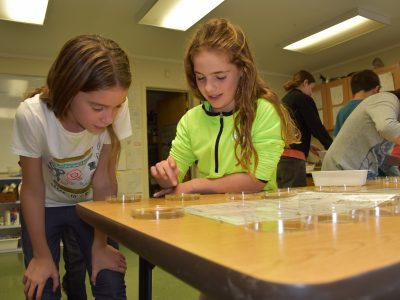 Miquon students cataloging macroinvertebrates collected from the Miquon creek post-construction
Miquon students cataloging macroinvertebrates collected from the Miquon creek post-constructionTo answer this question, we asked the most dedicated creek environmentalists that we know . . . Miquon students. Before and after the creek restoration, students engaged in a watershed curriculum with science teacher Kate Shapero, which included measuring and documenting the stream’s slope and grade, and creating a 1:6 scale model of the creek itself. As a part of their survey, the students placed leaf bags in the steam to collect macroinvertebrates living in the water as an indicator of water quality.
“Using petri dishes and microscopes, we identified the macroinvertebrates that we found in the water,” explained a sixth grader from Roxborough last spring.
The students compared their results with the same study conducted the year prior, before the restoration work was completed.
“Last year we only had a lot of boring scuds,” explained a fifth grader Mt. Airy. “This year, I found 15 species!”
Biohabitats concurred, noting that students finding a larger number of macroinvertebrates and more species meant the stream was getting cleaner.
Long reports that “the project stabilized the streambanks, developed habitat for aquatic and terrestrial plants and animals, improved fish habitat, and improved sediment transport. Visual monitoring of the reduced erosion of the stream banks and bed show that less sediment is being washed downstream*.
“Recovery of the Miquon Creek is environmentally significant on many levels, including reducing sediment loading to the Schuylkill River, creating improved aquatic habitat, and stabilizing a severely eroded/dangerous stream reach thereby creating enhanced educational opportunities for the students of Miquon School.”
 Miquon fifth and sixth graders accepting The Schuylkill Action Network’s Protecting Our Water Award in May 2017
Miquon fifth and sixth graders accepting The Schuylkill Action Network’s Protecting Our Water Award in May 2017The Schuylkill Action Network concurred on these successes and presented a Protecting Our Water Award to Miquon’s fifth and sixth grade students last year for their work protecting the river and drinking water in the Schuylkill River Valley.
“This water you’re protecting goes to the Schuylkill River, and that becomes drinking water for a lot of folks,” said Environmental Protection Agency’s Rick Rogers. “Everything you are doing and will continue to do is going to make that water even better. It is really important.”
May Your Stream Forever Flow
Making changes our long-adored creek posed initial uneasiness for Miquon, which, like nature, is always changing to some extent. And yet we are glad for it; the overall impact of this restoration of our campus and our environment has been overwhelmingly positive.
“The restoration provided us with a healthier creek,” says Principal Susannah Wolf ’81. “Children are finding more life in the water than ever. Last spring, we watched thousands of tadpoles grow and develop, right before our eyes.”
We strive to send Miquon graduates out into the world with a little bit of Miquon in their hearts — we know they will care for themselves, care for others, and care for their environment long after their time on this campus. The creek restoration exemplifies this goal we have for all of our students. More importantly, it allows for many more students to enjoy the creek for years to come.
In case you missed it last time, you can still check out the creek restoration video on Vimeo.
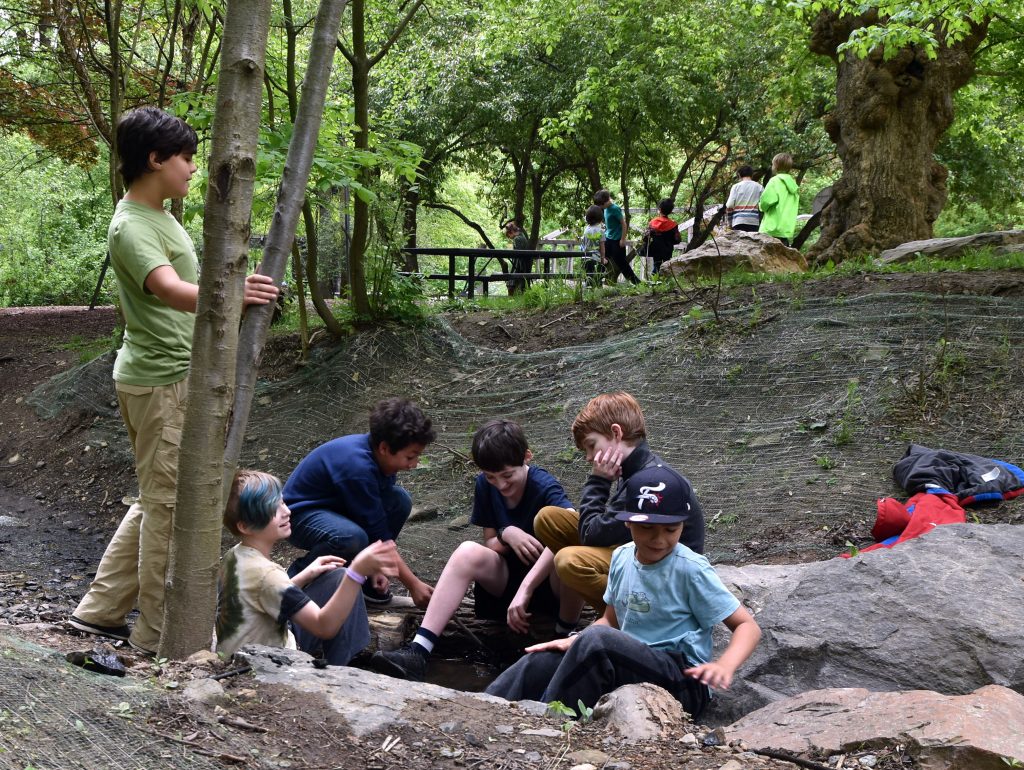 Students gather in the creek post-construction, with mesh screen and new plant growth emerging on the stream slope
Students gather in the creek post-construction, with mesh screen and new plant growth emerging on the stream slope*Removal rates for sediment are predicted at 125,736 lbs/year, total phosphorus 34.5 lbs/yr, and nitrogen 38 lbs/yr. Removal this quantity of pollutants (via stream erosion) will have a significant positive impact in the Miquon Creek and Schuylkill River Watershed.
